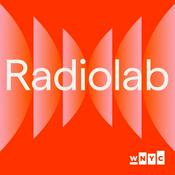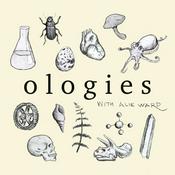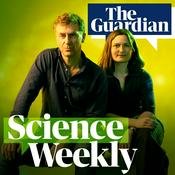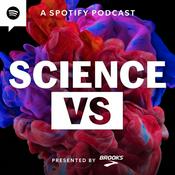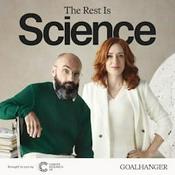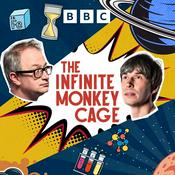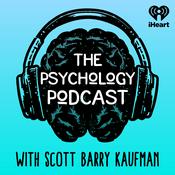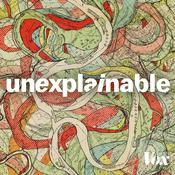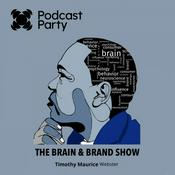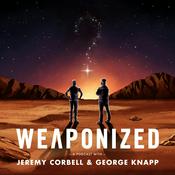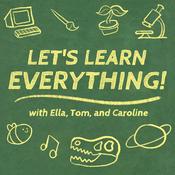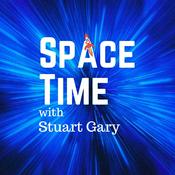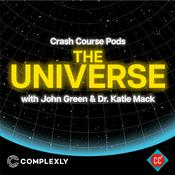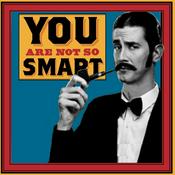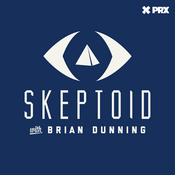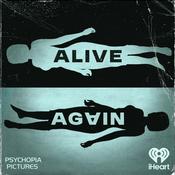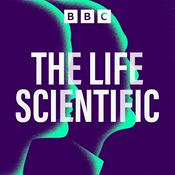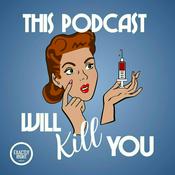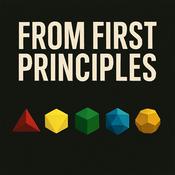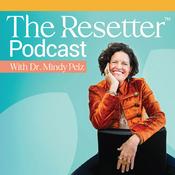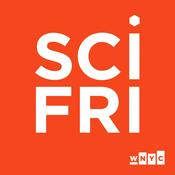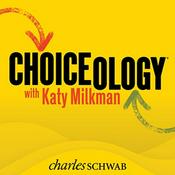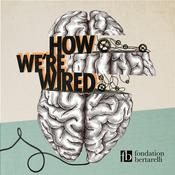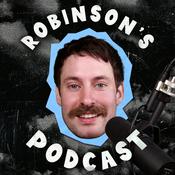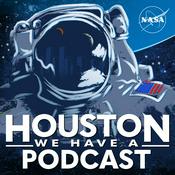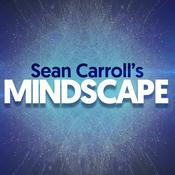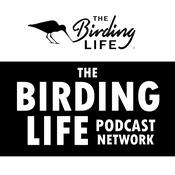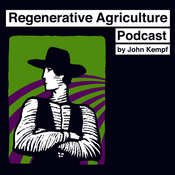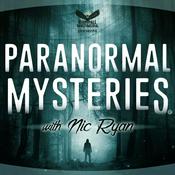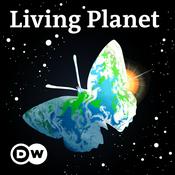Available Episodes
5 of 67
- Dr. Maria Nieves-Colón and Jaime Zolik, MA – Working with Ancient DNA and descendent communities in PeruDr. Maria Nieves-Cólon and Jamie Zolik join the show to discuss their ancient DNA research in San Luis de Cañete and what it can reveal about the historical population of the town specifically and the African diaspora in South America generally. They share some of the exciting ways they've forged a partnership with the community in order to carry out the work as ethically as possible. Recommendations Dr. Maries Nieves-Colón's faculty page at the University of Minnesota Nieves-Colón lab Jaime Zolik's bio Museo Afroperuano de San Luis de Cañete Nieves-Colón MA, Ulrich EC, Chen L, Torres Colón GA, Rivera Clemente M, Corporación Piñones se Integra (COPI), Benn Torres J. Genomic variation in Puerto Rican Afro-descendants illustrates diverse histories of African diasporic populations. American Journal of Biological Anthropology.185(3), e25059. Arbour, L., & Cook, D. (2006). DNA on loan: issues to consider when carrying out genetic research with aboriginal families and communities. Community genetics, 9(3), 153–160. https://doi.org/10.1159/000092651 Flewellen, A.O., Odewale, A., Dunnavant, J. et al. Creating Community and Engaging Community: The Foundations of the Estate Little Princess Archaeology Project in St. Croix, United States Virgin Islands. Int J Histor Archaeol 26, 147–176 (2022). https://doi.org/10.1007/s10761-021-00600-z Ávila-Arcos, M. C., de la Fuente Castro, C., Nieves-Colón, M. A., & Raghavan, M. (2022). Recommendations for Sustainable Ancient DNA Research in the Global South: Voices From a New Generation of Paleogenomicists. Frontiers in genetics, 13, 880170. https://doi.org/10.3389/fgene.2022.880170 Marciniak, S. Hunting for Pathogens: Ancient DNA and the Historical Record. (2016). In Mant, M., & Holland, A. (Eds.). Beyond the bones : engaging with disparate datasets. Elsevier Academic Press. Harper, K. (2023). Plagues Upon the Earth: Disease and the Course of Human History. Princeton University Press. Nieves-Colón, M.A. and Stone, A.C. (2018). Ancient DNA Analysis in Archaeological Remains. In Katzenberg, M.A. & Grauer, A.L. (Eds.). Biological Anthropology of the Human Skeleton. Wiley-Blackwell. Kowal E, Weyrich LS, Argüelles JM, Bader AC, Colwell C, Cortez AD, Davis JL, Figueiro G, Fox K, Malhi RS, Matisoo-Smith E, Nayak A, Nelson EA, Nicholas G, Nieves-Colón MA, Russell L, Ulm S, Vergara-Silva F, Villanea FA, Wagner JK, Yracheta JM, Tsosie KM. Community partnerships are fundamental to ethical ancient DNA research. Human Genetics and Genomics Advances. 42(2): 100161. Buffalo, V. (2015). Bioinformatics Data Skills: Reproducible and Robust Research with Open Source Tools. O'Reilly Media. Ted Lasso (TV series) Arcane (TV series) Dungeons & Dragons (game) Marques, G. G. (1967). One Hundred Years of Solitude. Harper & Row. Wynn-Williams, S. (2025). Careless People: A Cautionary Tale of Power, Greed, and Lost Idealism. Flatiron Books. Osman, R. (2021). The Thursday Murder Club. Penguin Books. Sterling, E. (2021). The Ex Hex. Avon Books. Henry, C. (2022). Into the Forest: Tales of the Baba Yaga. Black Spot Books.--------57:37
- Dr. Eric Shattuck – How do humans act when we get sick and why?Dr. Eric Shattuck of Florida State University joins the show to discuss his research on sickness behavior. He wants to know how humans tend to act when they get sick and why they act that way. Recommendations Dr. Shattuck's faculty page at FSU Dr. Shattuck's personal web page Social Health and Immunology Research (SHIRE) Lab page Dr. Shattuck's Google Scholar profile Shattuck, E.C. and Muehlenbein, M.P. (2015), Human sickness behavior: Ultimate and proximate explanations. Am. J. Phys. Anthropol., 157: 1-18. https://doi.org/10.1002/ajpa.22698 Shattuck, EC. (2021). Networks, cultures, and institutions: Toward a social immunology. Brain Behav Immun Health. 18:100367. doi: 10.1016/j.bbih.2021.100367. PMID: 34761241; PMCID: PMC8566934. Stockmaier S, Stroeymeyt N, Shattuck EC, Hawley DM, Meyers LA, Bolnick DI. Infectious diseases and social distancing in nature. Science. 2021 Mar 5;371(6533):eabc8881. doi: 10.1126/science.abc8881. PMID: 33674468. Shattuck, Eric & Muehlenbein, Michael. (2020). Religiosity/Spirituality and Physiological Markers of Health. Journal of Religion and Health. 59. 10.1007/s10943-018-0663-6. Human Relations Area Files (HRAF) Scavenger's Reign Common Side Effects Primal Weir, A. (2021). Project Hail Mary. Ballantine Books, New York.--------52:27
- Dr. Erin Blankenship-Sefczek – How does developmental stress affect dental morphology?Summary Dr. Erin Blankenship-Sefczek of Creighton University joins the show to discuss her research examining the connection between developmental stress and accessory cusps in teeth. Her work focuses on the placement and appearance of extra cusps that occur with greater frequency among individuals who have suffered stress during key developmental periods in their lives. Recommendations Dr. Blankenship-Sefczek's staff profile page at Creighton University Blankenship-Sefczek EC, Goodman AH, Hubbe M, Hunter JP, Guatelli-Steinberg D (2024) Nutritional supplementation, tooth crown size, and trait expression in individuals from Tezonteopan, Mexico. PLOS ONE 19(6): e0305123. https://doi.org/10.1371/journal.pone.0305123 Bailey SE, Hublin J-J. "What does it mean to be dentally "modern"?" [links to pdf of chapter] In: Scott GR, Irish JD, eds. Anthropological Perspectives on Tooth Morphology: Genetics, Evolution, Variation [links to site]. Cambridge Studies in Biological and Evolutionary Anthropology. Cambridge University Press; 2013:222-249. Riga, A., Belcastro, M. G., & Moggi‐Cecchi, J. (2014). Environmental stress increases variability in the expression of dental cusps. American Journal of Physical Anthropology, 153(3), 397-407. Riga, A., Belcastro, M. G., & Moggi-Cecchi, J. (2013). Environmental influence on dental morphology. arXiv preprint arXiv:1301.7334. Jernvall J, Thesleff I. Reiterative signaling and patterning during mammalian tooth morphogenesis. Mech Dev. 2000 Mar 15;92(1):19-29. doi: 10.1016/s0925-4773(99)00322-6. PMID: 10704885. Jernvall, J. Linking development with generation of novelty in mammalian teeth. Proc. Natl. Acad. Sci. U.S.A. 97 (6) 2641-2645, https://doi.org/10.1073/pnas.050586297 (2000). Smith, T. (2023). The Tales Teeth Tell. MIT Press. Heyer, G. (1949). Arabella. William Heinneman. Wynn-Williams, S. (2025). Careless People: A Cautionary Tale of Power, Greed, and Lost Idealism. Flatiron books.--------50:12
- Dr. Samantha Yaussy - What can frailty in skeletons from medieval London teach us about health?Dr. Samantha Yaussy of James Madison University joins the show to discuss her research on the how sex, socioeconomic status, and developmental stress and the intersectionality therein might interact to affect health outcomes in the past via the lens of frailty in skeletal remains primarily from medieval London. In this episode, we talked about the skeletal markers of frailty in human remains, understanding bias in research and samples, and intersectionality. As part of this, Dr. Yaussy highlighted the morbidity-mortality paradox -- women in modern contexts typically have worse health but longer lifespans than men. However, this doesn't seem to hold true in the populations she studies, which means the past may hold clues for improving health today. ------ Note: I feel pretty bad about dunking on The Pumpkin Spice Cafe. It was fine for what it was. I normally love "junk food" books, but this one just didn't do it for me, and that's ok. If you liked it, more power to you! Books, articles, and media mentioned in this episode + helpful sites and articles: Dr. Yaussy's personal website Dr. Yaussy's staff page at James Madison University Yaussy SL, DeWitte SN. Patterns of frailty in non-adults from medieval London. Int J Paleopathol. 2018 Sep;22:1-7. doi: 10.1016/j.ijpp.2018.03.008. Epub 2018 Apr 4. PMID: 29626661. Yaussy SL, Marklein KE, DeWitte SN, Crews DE. Frailty or resilience? Hazard-based and cumulative phenotype approaches to discerning signals of health inequality in medieval London. Sci Adv. 2024 Nov 15;10(46):eadq5703. doi: 10.1126/sciadv.adq5703. Epub 2024 Nov 13. PMID: 39536101; PMCID: PMC11559611. Kulminski AM, Culminskaya IV, Ukraintseva SV, Arbeev KG, Land KC, Yashin AI. Sex-specific health deterioration and mortality: the morbidity-mortality paradox over age and time. Exp Gerontol. 2008 Dec;43(12):1052-7. doi: 10.1016/j.exger.2008.09.007. Epub 2008 Sep 20. PMID: 18835429; PMCID: PMC2703431. Yaussy SL. The intersections of industrialization: Variation in skeletal indicators of frailty by age, sex, and socioeconomic status in 18th- and 19th-century England. Am J Phys Anthropol. 2019; 170: 116-130. https://doi.org/10.1002/ajpa.23881 Yaussy SL. The intersectional effects of sex and socioeconomic status on risk of mortality in industrializing England. Am J Biol Anthropol. 2024 Nov;185(3):e25022. doi: 10.1002/ajpa.25022. Epub 2024 Sep 8. PMID: 39245867. DeWitte SN, Yaussy SL. Sex differences in adult famine mortality in medieval London. Am J Phys Anthropol. 2020 Jan;171(1):164-169. doi: 10.1002/ajpa.23930. Epub 2019 Oct 6. PMID: 31587269. Biehler-Gomez L, Yaussy S, Moro C, Morandini P, Mondellini M, Petrosino D, Mattia M, Del Bo B, Cattaneo C. Unveiling the female experience through adult mortality and survivorship in Milan over the last 2000 years. Sci Rep. 2024 Sep 12;14(1):21328. doi: 10.1038/s41598-024-71607-9. Erratum in: Sci Rep. 2024 Nov 11;14(1):27553. doi: 10.1038/s41598-024-78532-x. PMID: 39266601; PMCID: PMC11393343. Yaussy, Samantha. (2022). Intersectionality and the Interpretation of Past Pandemics. Bioarchaeology International. 10.5744/bi.2020.0028. Wood, J. W., Milner, G. R., Harpending, H. C., Weiss, K. M., Cohen, M. N., Eisenberg, L. E., ... & Wilkinson, R. G. (1992). The osteological paradox: problems of inferring prehistoric health from skeletal samples [and comments and reply]. Current anthropology, 33(4), 343-370. Martin, D.L., Harrod, R.P, & Perez, V.R. (Eds.) (2013). Bioarchaeology: An Integrated Approach to Working with Human Remains. Springer. Agarwal, S.C. & Glencross, B.A. (Eds.) (2011). Social Bioarchaeology. Wiley-Blackwell. Buikstra, J.E. (Ed.) (2019). Ortner's Identification of Pathological Conditions in Human Skeletal Remains. Academic Press. Grauer, A.L. (Ed.) (2015). A Companion to Paleopathology. Wiley-Blackwell. Gowland RL. Entangled lives: Implications of the developmental origins of health and disease hypothesis for bioarchaeology and the life course. Am J Phys Anthropol. 2015 Dec;158(4):530-40. doi: 10.1002/ajpa.22820. Epub 2015 Aug 26. PMID: 26767348. Temple DH. Bioarchaeological evidence for adaptive plasticity and constraint: Exploring life-history trade-offs in the human past. Evol Anthropol. 2019; 28: 34–46. https://doi.org/10.1002/evan.21754 DeWitte SN, and Yaussy SL. 2020. Bioarchaeological applications of intersectionality. In Cheverko C, Prince-Buitenhuys J, and Hubbe M (Eds) Theoretical Approaches in Bioarchaeology. Abingdon, UK: Routledge. p. 45-58. Ritchie, S. (2021). Science Fictions: How Frauds, Bias, Negligence, and Hype Undermine the Search for Truth. St Martins Press-3PL. Godde K, Pasillas V, Sanchez A. Survival analysis of the Black Death: Social inequality of women and the perils of life and death in Medieval London. Am J Phys Anthropol. 2020 Sep;173(1):168-178. doi: 10.1002/ajpa.24081. Epub 2020 May 29. PMID: 32472637. McCool WC, Anderson AS, Kennett DJ. Using a multimethod life history approach to navigate the osteological paradox: A case study from Prehispanic Nasca, Peru. Am J Phys Anthropol. 2021; 175: 816–833. https://doi.org/10.1002/ajpa.24279 Shannon, S. (2019). The Priory of the Orange Tree. Bloomsbury Publishing. Adeyemi, T. (2018). Children of Blood and Bone. Henry Holt & Company. Gilmore, L. (2023). The Pumpkin Spice Cafe. HarperCollins. Clancy, K. (2023). Period: The Real Story of Menstruation. Princeton University Press.--------1:02:04
- Dr. Habiba Chirchir - Why did humans evolve to have less robust skeletons?Dr. Habiba Chirchir of the Ohio State University joins the show to discuss her research into the skeletal gracilization of modern humans. She's trying to understand when and why our skeletons became less robust, and whether self-domestication may have played a role. ------------------ Note: Apparently I got Dmitry Belyayev confused with Nikolai Vavilov. Both geneticists worked in the Soviet Union, but Dr. Belyayev wasn't persecuted to the same extent as Vavilov. Vavilov, who based his work on Mendelian genetics, ultimately died in prison for daring to go against Stalin's favored genetic model created by Trofim Lysenko and based on Lamarckism. Also worth noting: The contributions of Lyudmila Trut who worked with Dr. Belyayev and continued running the study after his death. Books, articles, and media mentioned in this episode + helpful sites and articles: Dr. Chirchir's staff page at OSU Dr. Chirchir's personal and lab website Assif, L., & Chirchir, H. (2024). Trabecular bone morphology in big cats reflects the complex diversity of limb use but not home range size or daily travel distance. The Anatomical Record, 307(1), 208–222. https://doi.org/10.1002/ar.25302 H. Chirchir, T.L. Kivell, C.B. Ruff, J. Hublin, K.J. Carlson, B. Zipfel, & B.G. Richmond, Recent origin of low trabecular bone density in modern humans, Proc. Natl. Acad. Sci. U.S.A. 112 (2) 366-371, https://doi.org/10.1073/pnas.1411696112 (2015). Chirchir H, Ruff CB, Junno J-A, and Potts R. Low trabecular bone density in recent sedentary modern humans. Am J Phys Anthropol. 2017; 162:e23138. doi:10.1002/ajpa.23138. Chirchir, H. (2019), Trabecular Bone Fraction Variation in Modern Humans, Fossil Hominins and Other Primates. Anat. Rec., 302: 288-305. https://doi.org/10.1002/ar.23967 H. Chirchir, T.L. Kivell, C.B. Ruff, J. Hublin, K.J. Carlson, B. Zipfel, & B.G. Richmond, Recent origin of low trabecular bone density in modern humans, Proc. Natl. Acad. Sci. U.S.A. 112 (2) 366-371, https://doi.org/10.1073/pnas.1411696112 (2015). Chirchir Habiba, Ruff Christopher, Helgen Kristofer M. and Potts Richard. 2022. Effects of reduced mobility on trabecular bone density in captive big catsR. Soc. Open Sci.9211345 http://doi.org/10.1098/rsos.211345. Chirchir H. Trabecular bone in domestic dogs and wolves: Implications for understanding human self-domestication. Anat Rec. 2021; 304: 31–41. https://doi.org/10.1002/ar.24510 Richmond, Brian & Green, David & Lague, Michael & Chirchir, Habiba & Behrensmeyer, Anna & Bobe, René & Bamford, Marion & Griffin, N & Gunz, Philipp & Mbua, Emma & Merritt, S & Pobiner, Briana & Kiura, Purity & Kibunjia, Mzalendo & Harris, J & Braun, David. (2020). The upper limb of Paranthropus boisei from Ileret, Kenya. Journal of Human Evolution. 141. 102727. 10.1016/j.jhevol.2019.102727. Perry, T.A. and Chirchir, H. (2019), Cortical and trabecular bone density distribution in primate and felid limb epiphyses. The FASEB Journal, 33: lb150-lb150. https://doi.org/10.1096/fasebj.2019.33.1_supplement.lb150 Cartwright C, Ragni A, Hublin JJ, Chirchir H. Trabecular bone volume fraction in Holocene and Late Pleistocene humans. J Hum Evol. 2024 May;190:103499. doi: 10.1016/j.jhevol.2024.103499. Epub 2024 Apr 3. PMID: 38569444. Barak MM, Lieberman DE, Hublin JJ. A Wolff in sheep's clothing: trabecular bone adaptation in response to changes in joint loading orientation. Bone. 2011 Dec;49(6):1141-51. doi: 10.1016/j.bone.2011.08.020. Epub 2011 Aug 26. PMID: 21893221. Barak, Meir & Lieberman, Daniel & Hublin, Jean-Jacques. (2012). Sheep in shoes: a new experimental test of Wolff's Law of trabecular orientation. 10.13140/RG.2.1.3689.5123. Barak, Meir & Hublin, Jean-Jacques & Lieberman, Daniel. (2011). Altering joint loading direction in the sheep generates trabecular orientation adjustment. Assif, L. and ChirChir, H. (2022), Trabecular bone morphology in felids reflects diversity in locomotor strategy but not home range size. The FASEB Journal, 36:. https://doi.org/10.1096/fasebj.2022.36.S1.R3371 Trut, Lyudmila. Early Canid Domestication: The Farm-Fox Experiment. American Scientist. 1999 Mar; 8(2): 160. Dr. Christopher Ruff's staff profile page at Johns Hopkins Dr. Ruff's Google Scholar profile Dr. Brian Hare's staff profile at Duke Dr. Hare's personal website Dr. Hare's Google Scholar profile Elzinga DC, Kulwicki R, Iselin S, Spence L, Capaldi A. Rapid evolution of prehistoric dogs from wolves by natural and sexual selection emerges from an agent-based model. Proc Biol Sci. 2025 Feb;292(2040):20242646. doi: 10.1098/rspb.2024.2646. Epub 2025 Feb 12. PMID: 39933588; PMCID: PMC11813586. Grantchester on PBS--------40:08
More Science podcasts
Trending Science podcasts
About AnthroBiology Podcast
The AnthroBiology Podcast sits down with biological anthropologists once or twice a month to learn about what they do and why it's rad. Want to know more about our evolutionary past? Or what your bones say about you? Maybe chimps are more your speed? If it's anthropology and it's about humans, we'll cover it.
Learn more at anthrobiology.com
Podcast websiteListen to AnthroBiology Podcast, StarTalk Radio and many other podcasts from around the world with the radio.net app

Get the free radio.net app
- Stations and podcasts to bookmark
- Stream via Wi-Fi or Bluetooth
- Supports Carplay & Android Auto
- Many other app features
Get the free radio.net app
- Stations and podcasts to bookmark
- Stream via Wi-Fi or Bluetooth
- Supports Carplay & Android Auto
- Many other app features


AnthroBiology Podcast
Scan code,
download the app,
start listening.
download the app,
start listening.

